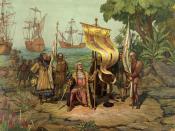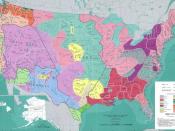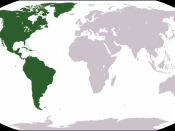1491, which was published in 2005 by Vintage Books, is a subversive study that immensely alters most people's understanding and knowledge of the Americas before the arrival of the Europeans in 1492. The nonfiction historical novel by Charles C. Mann explains about a new generation of researchers' conclusions about the history of Native Americans before the arrival of Columbus. Mann uncovered many of the untold facts that have never been taught in traditional school. The primary point Mann is trying to make known is the natives population was larger, and the societies were more cultivated than what most people believe.
Since the beginning of the 19th century students have been told inaccurate information about the native people of America. Usually, Americans learn in school that the ancestors of the people who were established in the Western Hemisphere at the time of Columbus's landing had crossed the Bering Strait twelve thousand years ago.
They supposedly lived primarily in small, nomadic bands, and lived lightly on the land so that the Americas was, for the most part, still a vast wilderness. But Mann makes it clear that anthropologists and archaeologists have spent the last thirty years proving many conventions wrong. In 1491 the author explains there were probably more people living in the Americas than in Europe.
1491 ended up being an intriguing book. Despite not being a particular favorite it is an informational book. Agreed, Mann carefully constructs Indian society across the Western hemisphere and shows readers the destructive impact of Columbus' discovery on native populations, but many points mentioned in the national bestseller are controversial. For example: everyone agrees the Europeans brought diseases which removed large numbers of Indians. Not to mention, many researchers argue that structures claimed to be of human origin, such as the Beni causeways in Bolivia,


